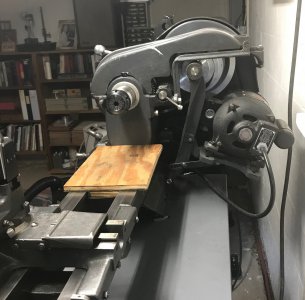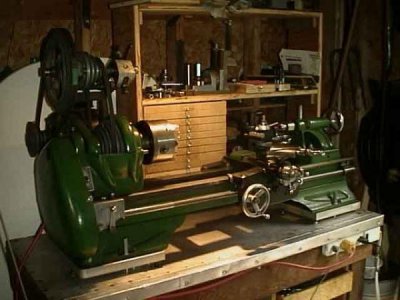@JPMacG
Hi Jon. Just getting back to your original dilemma, you adjusted under supports to get the lathe "level", and found it cutting a taper.
At this point, the taper might have been from tailstock misalignment alignment.
Regardless that possibility , you then ignored level setups, and forced the supports to to "improve" the taper,
by so distorting the rest of the machine as to mostly, but not entirely, compensate for what may have been simple sideways displacement of the tailstock, or a quill side play under force, or other stuff. Do not bend on your machine "until the symptom goes away". Be very sure what the real cause is!
1. I suggest start again. No matter whether you use a level, or some other means to establish the ways alignment, be sure you have that right. By far the easiest way is to use a level, and measure across the ways all along X at about 10cm (4") intervals. Even before that, walk the level along the ways X-axis, and establish whether the top surface of the ways is still unworn (it should be), and so get to know if the ways are are bowed or not. Keep notes, or write on the machine with a marker.
2. Next is to be reasonably sure the headstock is pointing along the axis correctly, though you can assume this, and more easily establish that afterwards, if problems persist. By now, you will have discovered twist, if any, and maybe even set it up "level", and untwisted it.
3. Next is to know absolutely whether the tailstock is set up right. Yes, you can do this with a dumb-bell test bar you make, but first put a dead centre in the tailstock, and also in the spindle taper (not a chuck). Chucks have their own separate alignment and run-out issues. Push the tailstock up to the headstock, and hold a small, thin thing, like a 6" rule between the points. You will quickly discover if something is too high, or low, or sideways. Shim the tailstock to be the right height, and move it's sideways adjusts until its dead on, and be sure to close up and lock the remaining gaps in the adjust screws.
4. Now get critical of the quill. Set up a dial test, first against the topside, and then the nearside of the quill, and wind it in and out, Try the tailstock at two or three places along the bed. Discover what the tailstock is doing. I do not expect any silly stuff would happen here. You should be OK. It goes without saying that when you do make test cuts, everything that can be tightened to lock up movement is done OK.
5. Test cuts. By now, you should have the bed level, as the way of discovering it is not twisted. You should have walked the level along X-axis. You might also have put an indicator on the saddle, and tested down onto an unworn reference, or onto a block placed across the ways, and tested along the length as best can be traveled. You can also do one at a time, testing onto a gauge block placed against a way's running surface. Get this far, and you will either have fixed the problem, or you can clearly see what it is.
6. Finally, unlikely, but I mention for completeness. Is the headstock aligned? Putting a known test bar, not too long, but at least 30cm, into the cleaned spindle taper, and testing along it's top and side with a DTI will tell you. It must at least point along the same direction as the saddle is headed along the ways. My South Bends do not even have any aspect of this adjustable. The headstock sits on the ways, and is never much disturbed from then on.
I don't really know any more on this. I am sure there are HM folk who have taken lots more pain than me in setting up. I think I just got lucky.




